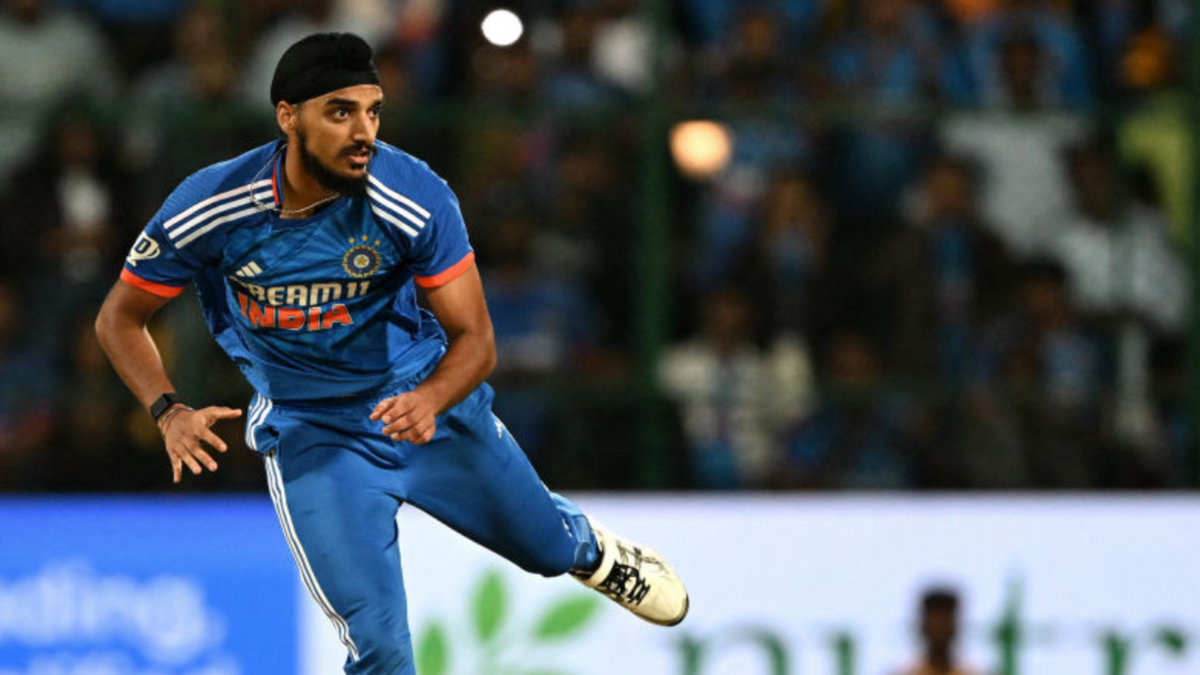
Arshdeep Singh, India’s lead T20I seamer after Jasprit Bumrah, has had a steady decline in numbers in his second year in international cricket, but it might not be as bad as it looks, writes Naman Agarwal.
Subscribe to the Wisden Cricket YouTube channel for post-match analysis, player interviews, and much more.
When Arshdeep Singh made his T20I debut for India in July last year, his first five games yielded nine wickets at 6.05 runs per over. A left-arm seamer who could swing the ball both ways and bowl yorkers at will? India had hit the jackpot.
He had a fruitful first year in international cricket, taking 33 wickets from 21 T20Is at an economy rate of 8.17. No seamer picked up more wickets in fewer games than he did. Even as India missed the services of Jasprit Bumrah in the 2022 T20 World Cup, by that time, Arshdeep had developed into a bowler who could be relied upon.
The story this year, however, has been slightly different. His overall T20I numbers in 2023 read 25 wickets from 19 games at 23.7 – decent enough, you’d think. But his economy has taken a hit. From 8.17 last year, it has jumped to 9.15 in 2023.
Arshdeep has gone for more than 10 runs per over in nine out of the 19 games he has played this year. He was particularly expensive in the series against Australia, going at more than 10 runs per over in each of the four games he played.
Luckily for Arshdeep and India, wickets have still come by for him as his bowling strike rate still reads an impressive 15.5 balls per wicket in 2023, not a massive drop off from the 13.3 balls that he was taking to pick a wicket last year. However, there’s a catch.
Last year, when he was on song, a major portion of Arshdeep’s wickets came with the new ball right at the start of the innings. Inside the first four overs, he took 13 wickets, with a wicket every 12.9 balls. Fourteen of his 33 wickets were of batters batting in the top three, where the cream of T20 batting lineups generally feature. He was taking out the oppositions’ biggest threats early in the innings and was making a lot of them look silly while doing so.
This year, he seems to have lost a bit of rhythm with the new ball. The first four overs of the innings have only brought him six wickets, with each wicket taking as many as 28 balls to come, more than twice that of last year. He has been better towards the end of the powerplay, taking three wickets at 8.40 runs per over between overs five and six, but the swing and seam he was generating in the first few overs last year, seems to have lost some control.
Along with powerplay numbers, Arshdeep’s numbers at the death have also taken a hit. Last year he conceded just 8.86 runs per over at the death in T20Is, a far cry from the 10.54 runs per over that he has gone at in 2023. The yorker that brought him success in the IPL and in T20Is last year, has failed to land properly this year – and it shows in the number of sixes he has been hit for. Last year, only six out of the 145 balls bowled by Arshdeep at the death were hit for sixes, this year he has already conceded 18 sixes from 148 deliveries at the death in T20Is.
While the drop in returns of the left-arm seamer has been obvious, without context, it is misleading.
This year, Arshdeep has played nine T20Is in India compared to just two last year. And T20Is in India are generally high-scoring affairs. The nine which Arshdeep played in 2023, saw bowlers concede at an average of 9.06 runs per over. That includes seamers and spinners from all teams.
If you just account for the fast bowlers, they went at 9.96 runs per over. Arshdeep went at 10.18. Given he bowls almost exclusively in the powerplay and at the death, that’s a margin he can be given without being crucified for it.
On the other hand, in 2022, Arshdeep had the benefit of playing in conditions that weren’t as flat. Nine games across Australia, England, and New Zealand, five in the UAE, and five across the West Indies and the USA provided him just enough assistance to shine through.
The 2024 T20 World Cup is to be played in the Caribbean and the USA. From 10 games there, Arshdeep has taken 14 wickets at 7.87 runs per over. No other seamer has taken more wickets at a better economy rate in T20Is there in the last two years.
Jasprit Bumrah, if available, will be the leader of India’s seam attack in the tournament. The next-in-line, however, will be Arshdeep. With India not having a lot of T20Is lined up before the event, the players will have to rely on IPL 2024 to fine-tune their processes and get back in rhythm. Currently, Arshdeep might seem to be short on it, but the downward slope he is on, isn’t as steep as it looks like, and it shouldn’t take him long to turn it around.








